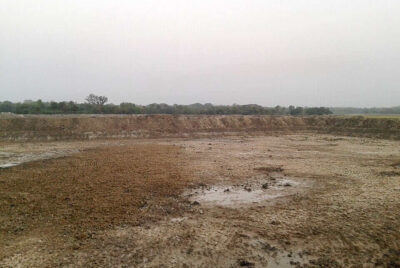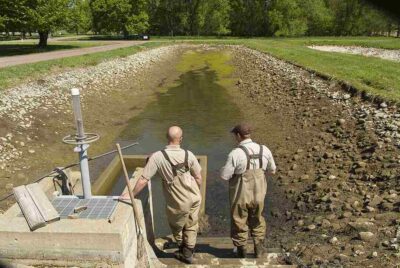How to Get Rid of Algae in a Large Pond
Ponds are serene and beautiful, providing a habitat for a variety of flora and fauna. But, every pond owner encounters one common problem – algae. Keeping your pond free of algae is a constant struggle. However, not all algae are harmful. In fact, a certain amount is needed to create a balanced ecosystem. The problem starts when algae overgrows, leading to aesthetic and ecological issues. In this article, we’ll delve deep into understanding algae and provide a comprehensive guide on how to get rid of algae in a large pond.
Understanding Algae: Friend or Foe?
Algae is a diverse group of aquatic organisms that encompass a range of species, from microscopic entities to large seaweeds. Algae are the primary producers in the aquatic food chain, creating a foundation for other aquatic life forms. They produce oxygen and consume carbon dioxide, thereby maintaining the balance of these gases in the atmosphere.
However, when nutrients such as nitrogen and phosphorus are in abundance, algae can proliferate rapidly, leading to an “algae bloom”. An overgrowth of algae can lead to various issues including depletion of oxygen levels, blockage of sunlight, and even toxicity in some cases.
Identifying Algae Types
Algae, although often associated with green, slimy substances that accumulate on the surface of ponds and other bodies of water, actually represent a diverse group of aquatic organisms that can range from small, single-celled forms to large, multicellular forms.
They are crucial for the ecosystem as they provide a food source for many aquatic creatures and produce a large amount of the world’s oxygen through photosynthesis. However, when they grow in excess, they can become problematic, leading to issues like poor water quality and the death of other aquatic life due to oxygen depletion.
Planktonic Algae – (How to Get Rid of Algae in a Large Pond)
Planktonic algae are microscopic and free-floating organisms that are usually found in the water column. They are the base of the food web in most aquatic ecosystems and play a significant role in oxygen production and carbon dioxide absorption, helping to regulate the atmospheric balance. When conditions are favorable, including sufficient sunlight, nutrient availability, and optimal temperature, these algae can reproduce rapidly causing what is known as an algal bloom, resulting in water that is murky and green. Some common types of planktonic algae include Chlorella, Euglena, and Volvox.
Filamentous Algae – (How to Get Rid of Algae in a Large Pond)
Filamentous algae, also known as string algae or pond scum, are made up of long, hairlike strands or chains of cells that intertwine, forming mats that can float on the water’s surface or attach to objects in the water. These algae are often seen in slow-moving bodies of water where they can gain a foothold. They begin growing along the bottom of the pond and as they grow, they use the generated oxygen to rise to the surface. While they are not typically toxic, their overgrowth can cause oxygen depletion at night or under cloudy conditions, leading to the death of fish and other aquatic organisms. Some common types of filamentous algae include Spirogyra, Cladophora, and Pithophora.
Blue-Green Algae (Cyanobacteria)
Blue-green algae, scientifically known as Cyanobacteria, are a unique group of photosynthetic bacteria that are often mistaken for algae due to their ability to carry out photosynthesis and their similar appearance. However, they are actually bacteria. They can live in a wide variety of environments including fresh and saltwater, soil, and even extreme environments like hot springs. Cyanobacteria can be toxic and when they proliferate in freshwater bodies, they can create harmful algal blooms (HABs) that produce toxins harmful to humans, pets, and aquatic life. These toxins can cause a range of health problems, from mild skin irritations to severe illness if ingested. The most common genera of toxin-producing cyanobacteria include Microcystis, Anabaena, and Cylindrospermopsis.
Algae: A Symptom of Imbalance
Algae overgrowth is a symptom of nutrient imbalance in your pond. Nutrients can come from several sources such as lawn fertilizers, dead leaves, grass clippings, and animal waste. These nutrients, particularly nitrogen and phosphorus, can trigger excessive algae growth. Hence, the key to algae control lies in managing these nutrient levels.
Strategies for Algae Control
Here are some preventive and curative strategies to manage algae in your pond:
Preventive Measures:
Prevention is always better than cure. This principle is also applicable for algae control. Here are some preventive measures:
- Nutrient Control: Reduce the nutrient load in your pond. Avoid overuse of fertilizers near the pond. Clean away dead leaves and grass clippings regularly.
- Fish Feeding: Overfeeding fish leads to excess food that decays and adds to the nutrient load in the pond. Feed your fish only as much as they can consume in a few minutes.
- Vegetation Buffer: Maintain a buffer strip of native vegetation around your pond to prevent runoff from fertilized lawns.
- Water Circulation: Stagnant water promotes algae growth. Install a waterfall, fountain, or an aeration system to keep the water circulating.
- Beneficial Bacteria: Add beneficial bacteria to your pond regularly. These bacteria compete with algae for nutrients, thereby controlling their growth.
Algae Removal Measures:
Sometimes, despite your best efforts, algae may still bloom. Here are some algae removal strategies:
- Mechanical Removal: Use a net or a rake to remove visible clumps of algae. This method is best suited for small ponds or for initial cleaning of heavily infested ponds.
- Biological Control: Introduce algae-eating organisms like tadpoles, snails, or certain fish species. They can help in controlling algae naturally.
- Chemical Control: Use EPA approved algaecides for severe infestations. Always follow the manufacturer’s instructions to ensure the safety of other pond inhabitants.
- Barley Straw: When barley straw decomposes in water, it releases chemicals that inhibit algae growth. It is a natural and environmentally friendly method.
Conclusion – (How to Get Rid of Algae in a Large Pond)
Algae control in large ponds is not a one-time task. It requires consistent efforts and regular monitoring. It is important to remember that the goal is not to eradicate algae completely, but to maintain a balance. A healthy pond is one where all its inhabitants, including algae, live in harmony.
Frequently Asked Questions – (How to Get Rid of Algae in a Large Pond)
Q: Why is there so much algae in my pond?
A: Algae overgrowth is usually due to an excess of nutrients, particularly nitrogen and phosphorus, in the water. These nutrients can come from several sources such as lawn fertilizers, dead leaves, grass clippings, and animal waste.
Q: Is algae harmful to fish?
A: Not all algae are harmful. In fact, some algae are beneficial as they produce oxygen and serve as food for some fish and insects. However, an overgrowth of certain types of algae, like blue-green algae, can produce toxins that are harmful to fish.
Q: Can I use chemicals to kill algae?
A: Yes, there are EPA-approved algaecides available that can kill algae. However, they should be used as a last resort and always as per the manufacturer’s instructions.
Q: How often should I clean my pond?
A: The frequency of pond cleaning depends on various factors such as the size of the pond, the number of fish, the presence of plants, and the external environment. However, as a rule of thumb, a complete clean-out should be done once a year.
Q: Can I prevent algae growth completely?
A: Completely preventing algae growth is not feasible or desirable as they are part of the natural ecosystem of the pond. However, their growth can be controlled and maintained at a balanced level by following the preventive measures discussed above.




